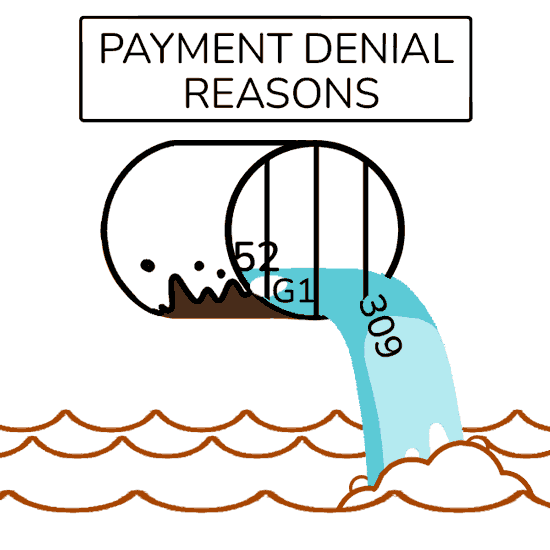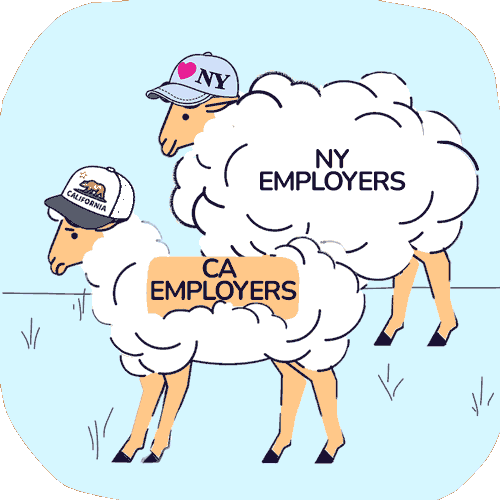WCIRB’s Flawed Data Means Higher Premiums for CA Employers

Insurers control the narrative around California’s workers’ compensation—and it’s costing the state’s employers more every year.
Annually, the Workers’ Compensation Insurance Rating Bureau (WCIRB) issues its State of the System report—a glossy slideshow of charts, graphs, and confident conclusions. And every year, state legislators, regulators, and policymakers accept it with baffling credulity.
We can’t say it loud enough: the WCIRB is 100% insurer-funded. It exists to serve the interests of its insurer members, including advancing narratives that justify higher premiums for employers.
While the WCIRB allows nominal input from employers and labor, it is overwhelmingly controlled by insurers—the very entities that profit when “official” analyses inflate California’s workers’ comp costs.
At daisyNews, we read the fine print of the WCIRB’s reports. Time and again, we find fundamental problems with the data and methods—problems that ultimately hit employers’ bottom lines and undermine injured workers’ care.
The WCIRB’s 2025 State of the System Data Sources
The WCIRB 2025 State of the System includes disclaimers that should raise alarms for every reader, including:
- The data are self-reported by insurers. “The information presented reflects a compilation of individual insurer submissions of information to the WCIRB…”
- The data are unverified. “The WCIRB can make no warranty with respect to the information provided by third parties [i.e., self-reporting insurers].”
- The data have questionable applicability: The report “...is based on the reported experience of insured employers only and may or may not be indicative of the experience of the state as a whole including self-insured employers.”
Even worse, some of the data are years old, with 2023 and 2024 data listed as “preliminary”.
In short, the WCRIB’s “data” are susceptible to distortion—and distorted data inevitably drive higher costs for California employers.
State’s Failure to Gather Data Keeps Stakeholders Stuck on WCIRB
California law requires the state’s Division of Workers’ Compensation (CA DWC) to collect and report comprehensive claim data through the Workers’ Compensation Information System (WCIS)—a state-managed repository of data on every work-related injury.
WCIS was meant to provide transparent, verifiable insight into claims—and free stakeholders from relying exclusively on insurer-controlled data.
But for years, the CA DWC has failed to implement WCIS as required by Labor Code Section 138.6. The CA DWC openly declares WCIS reporting “voluntary.” No one knows how many claims administrators report to WCIS or whether the data they submit are complete.
Interestingly enough, §138.6 specifically directed the CA DWC to develop WCIS “in consultation with” the WCIRB. Unsurprisingly, the WCIRB continues to control California workers’ comp data—exactly what legislators sought to avoid.
Employers Should Demand Accountability
California employers deserve better than insurer-fed narratives dressed up as “data.”
Employers deserve transparency, verification, and independent corroboration, not numbers filtered through an industry mouthpiece with every incentive to inflate costs.
- Until WCIS reporting is implemented and enforced, California cannot claim to have a complete picture of workers’ comp costs.
- Until independent organizations can access raw claims data, the WCIRB’s State of the System should not be treated as gospel.
It’s long past time for employers to demand accountability. Only then can legislators and regulators make policy based on facts rather than insurer spin.
As things stand, California workers’ comp is at the mercy of an entity credibly accused of “skewing” statistics to benefit its members at employers’ expense. The status quo is unacceptable. Demanding change is an imperative.
Attachments: WCIRB Fine Print Says It All
The images below disclose information critical to understanding the WCIRB’s questionable 2025 State of the System report.
- The WCIRB website’s About page notes that the organization is “comprised of all companies licensed to transact workers’ compensation insurance in California”—these entities fund the WCIRB.
- The WCIRB chart below on statewide claim frequency from the 2025 State of the System cites statistical data from policy year 2022 and medical transaction data for policy year 2022 claims (emphasis and highlight added).
- The 2025 State of the System also notes the “Conditions and Limitations” of WCIRB data, which reflects “a compilation of individual insurer submissions” that the WCIRB does not independently verify and for which the organization “can make no warranty.”
- The Governing Committee page reveals that WCIRB leadership is dominated by insurers, with just a single employer on the Committee.
daisyBill automatically tracks every bill and response—so providers always know the next step. Click below for a closer look:
BILL BETTER: DAISYBILL
DaisyBill provides content as an insightful service to its readers and clients. It does not offer legal advice and cannot guarantee the accuracy or suitability of its content for a particular purpose.






.gif)